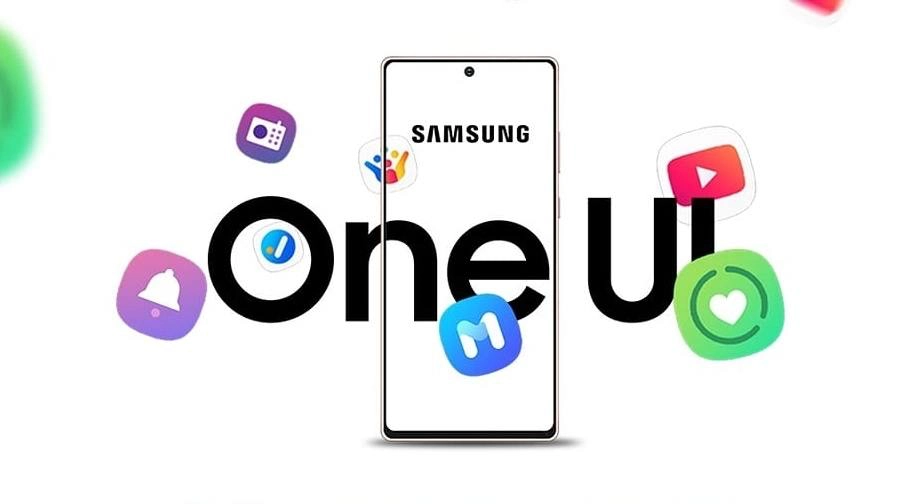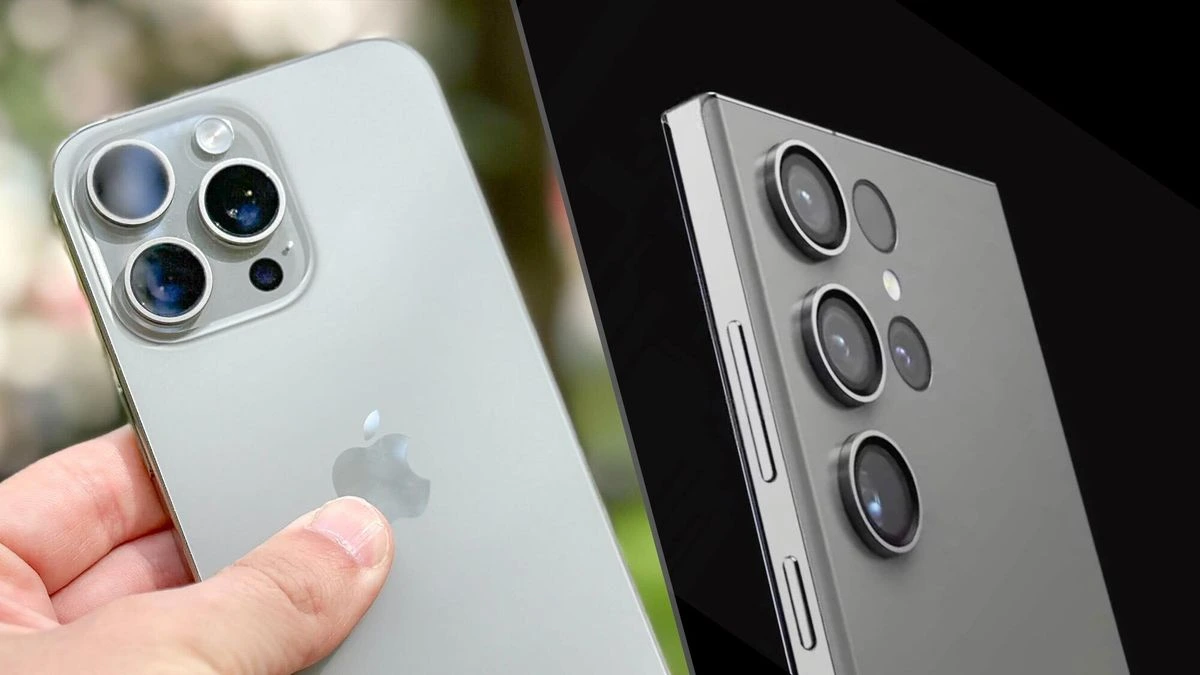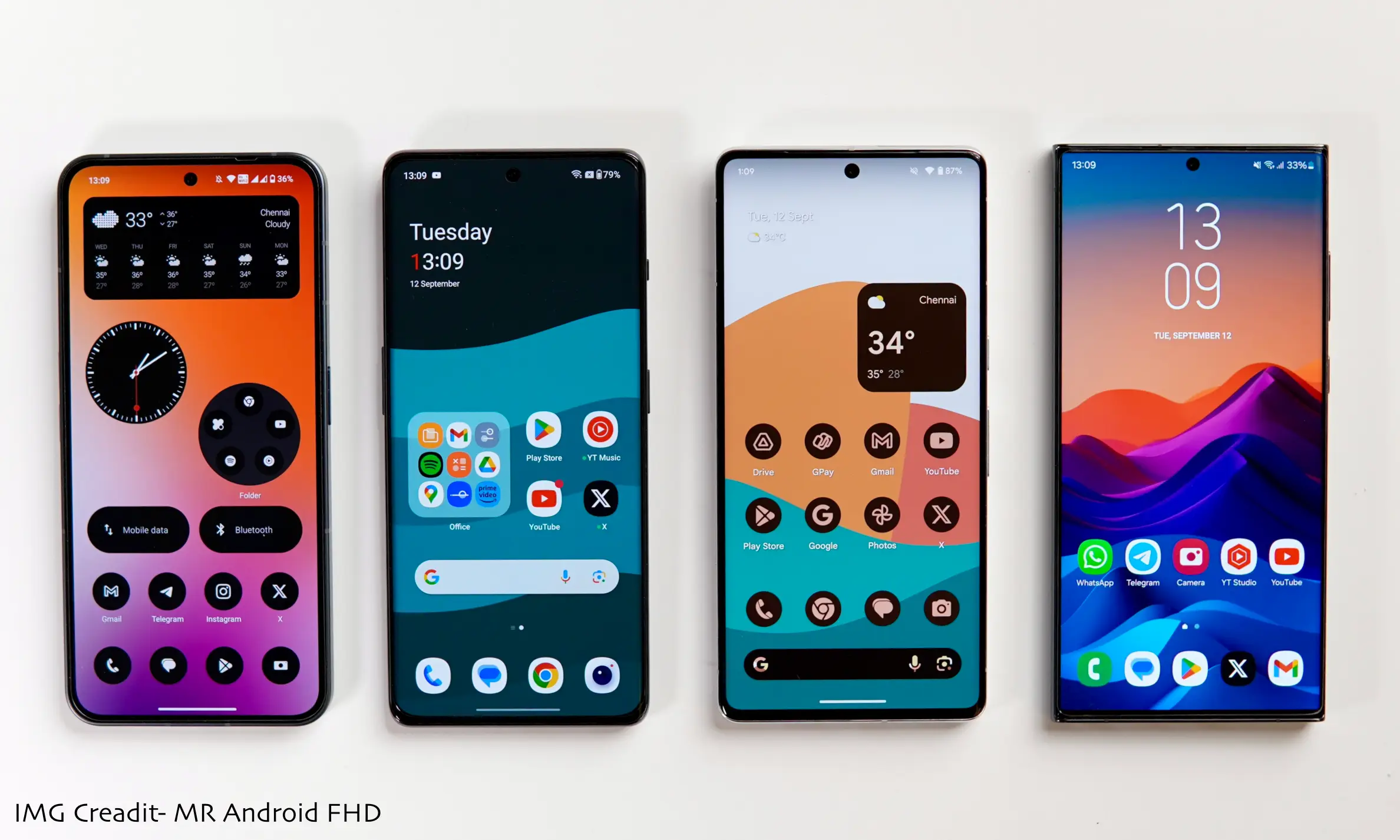Samsung
Samsung One UI Custom Android Skin – From TouchWiz to Today

Samsung consists of the most advanced yet innovative custom Android skin, the One UI, which is highly customizable and offers the most commendable properties to its customers. This is the reason why Samsung’s One UI has always been under the spotlight. Meanwhile, due to its highly customizable functionalities, it is designed to offer an enhanced multitasking experience to Galaxy users. Unlike other custom Android skins, Samsung’s One UI is still considered the best among all due to its innovative interface.
Samsung One UI Android-based Custom Skin
Here you will go through the entire journey of Samsung’s One UI, including how it started and how it’s going.
Years ago, Samsung designed a highly customizable user interface for its Galaxy phones and tablets so that users could have more options to significantly overhaul their devices, from themes and app icons to home and lock screen layouts. However, Samsung has performed a major overhaul to its One UI, and people have witnessed some big as well as small yet relevant tweaks and enhancements within the functionalities and other features of the One UI.
Samsung has always been committed to making its One UI the most advanced UI for its Galaxy devices. Since its arrival, the brand has undergone several changes in order to make it much better, improved, and highly interactive for the users. With every iteration, the One UI has been consistently aimed at refining the experience of Galaxy users. Here’s all about every OneUI iteration.
One UI 1
Samsung introduced the first iteration of its custom Android skin, the One UI 1.0, back in December 2018 along with the Android 9 Pie OS, while the first phone to get its courtesy was the Galaxy S8, followed by the Note 8 and Note 9, respectively. Later on, Samsung provided the next version, the One UI 1.1, as a pre-installed update on the Galaxy S10 and A lineup, along with the foldable Z Fold.

However, as it was the first version of the One UI skin, it arrived with some minor upgrades and enhancements, including optimizations within cameras, authentication methods, and some other performance optimizations as well. In addition, the One UI 1.5 version, pre-installed on the Galaxy Note 10, also added Link to Windows support.
One UI 2
In November 2019, Galaxy users witnessed a new stable version, the One UI 2.0, which was significantly based on Android 9 out of the box. This stable version brought up some significant enhancements within certain functionalities, including the Dark mode, a dynamic lock screen that allows the phone’s wallpaper to change each time the display is turned on, the Files app’s trash folder, and a built-in screen recorder. The One UI 2.1 brought Quick Share functionality, and the One UI 2.5 introduced Samsung DeX for PC and TV.
The brand provided this build to the Galaxy Note 9, Note 10, S9, and S10 lineups, respectively. However, this build already arrived pre-installed on the Galaxy S10 Lite and Note 10 Lite models. Moreover, other versions, including the One UI 2.1, debuted with the S20 lineup, while the next One UI 2.5 build arrived with the Galaxy Note 20, Z Fold 2, and S20 FE models, respectively.
One UI 3
The third One UI iteration was the One UI 3.0, which arrived in December 2020, while the Galaxy S20 models were the first to get the courtesy of this One UI iteration. This iteration arrived with a translucent notification panel and Samsung Free. Also, the One UI 3.0 came with some animation and transition improvements, along with some revamped home screen widgets. However, the next version, One UI 3.1, introduced no new yet noticeable tweaks and functions but brought some improvements within the camera system. Samsung pre-installed One UI 3.1 on the Galaxy S21 lineup, while the third-generation foldables, the Z Fold3 and Flip3, significantly arrived with the One UI 3.1.1 build.
One UI 4
Launched publicly to every Galaxy user, Samsung unveiled its next One UI iteration, the One UI 4.0, in November 2021, which was significantly based on Android 12. The aim of One UI 4.0 is to offer several irrelevant customizations and privacy capabilities with enhanced haptic feedback, round-shaped widgets, and better location features.

The Galaxy S21 models were the first to get this build, while it came pre-installed on the Galaxy S22 series, while the Galaxy Tab S8 got the courtesy of the One UI 4.1 that brought some noticeable changes and upgrades, including night mode portraits, an enhanced calendar, and a revamped palette picker. However, the One UI 4.1 arrival was followed by the One UI 4.1.1 build, which was based on Android 12, and significantly arrived for the Galaxy foldables, Z Flip4 and Fold4, Tab S6 and Tab S7, as well as the Tab S8 series, respectively.
One UI 5
Now was the turn of the next One UI iteration, One UI 5.0, which was released in October 2022 and was based on Android 13. With the One UI 5.0 build, Galaxy users witnessed some significant yet noticeable revamps, and Samsung overhauled its custom Android skin with the One UI 5.0 version, making it smoother among all the aforementioned One UI iterations. It introduces the proper Material You integration, which certainly allows users to apply the changes within the color palette to the entire UI.

Debuted with the Galaxy S22 series models, the One UI 5.0 update introduced much-improved stacked widgets, along with the ability to add numerous users while also including the guest profile. Moreover, Samsung also unveiled the next version, the One UI 5.1, which brought up a revamped gallery, the latest battery widget, and the integration of expert RAW to the Galaxy S22 and the Z Fold4, while Samsung released the One UI 5.1 with the Galaxy S23 series under the hood. Moreover, the next build version was One UI 5.1.1, which significantly arrived with the Galaxy foldables Z Fold4 and Flip4 along with the Galaxy Tab S8.
One UI 6
Meanwhile, here comes the latest One UI iteration, the One UI 6.0, which is still in the limelight, as Samsung has overhauled this latest One UI version with some commendable features and upgrades. The One UI 6.0 is based on Android 14 and debuted with the Galaxy S23 lineup in August 2023, followed by a stable release at the end of October.

Indeed, Samsung’s One UI 6.0 is still the most improved build so far, as it arrived with some significant enhancements and functionalities, including the addition of the camera widget to the home screen, allowing users to choose their desired camera mode right from the widget without having to open the camera app for choosing the specific camera mode.
Basically, it revamped the Galaxy Camera system, with the camera hardware of the flagships reaching 200 MP. Moreover, this build also revamped the Quick Settings tile and brought up some simple arrangements for certain options, including Wi-Fi, Bluetooth, and Airplane mode. There is an option added for lock screen customization with the capability to move the clock as desired, while also adding several fonts and design options for the clock.
After the One UI 6.0 update, Samsung introduced a new build, the One UI 6.1, which is considered the biggest One UI overhaul and is still in the spotlight due to its commendable functionalities that brought up some of the best possible AI features, dubbed Galaxy AI. Debuted with the current flagship series, the Samsung Galaxy S24 lineup, this new One UI 6.1 introduces several AI-powered features, including the Circle to Search by Google, Live Translate, Chat Assist, Note Assist, Generative Edit, Generative Wallpaper, Interpreter, and Transcription, along with several other Galaxy enhancements and relevant upgrades.
However, this build will be followed by the next version, the One UI 6.1.1, which has not arrived officially, but several leaked reports state that the One UI 6.1.1 might introduce some more AI functionalities such as the Video AI feature and other improvements to its upcoming foldables and tablets.
One UI 7
Samsung will launch the next One UI iteration, One UI 7.0, which will be based on the upcoming Android 15 out of the box. Although Android 15 is still under development, it could be presumed that Samsung has already begun working on the next One UI build, One UI 7.0. Soon after Google will introduce the Android 15 version, Samsung will launch the One UI 7.0 build for all of its upcoming Galaxy devices. Also, it’s expected that this latest and upcoming build will go through some significant overhauls and introduce certain improvements within the functionality of the Galaxy UI.
Samsung
Samsung Electronics Introduces ‘Gift Funding’ Campaign

Samsung Electronics is running a campaign named “Gift Funding,” likely to promote its gadgets as gift ideas for several celebrations.
The Korean Electronics Firm began this campaign today, May 16th. Following the ‘Bespoke Wedding Funding’ for newlyweds introduced back in 2023, the giant has now decided to introduce the upgraded ‘Samsung Gift Funding’ so that anyone can participate at any moment when the celebration is required.
It showcases the requirements of consumers who want to grab practical gifts that are necessary for meaningful anniversaries; for instance, weddings and moving, as well as birthdays, graduations, and school entrance exams. If you choose the product you want on Samsung.com and share the gift funding participation link along with a message card with those around you, your friends will be able to participate in funding up to the amount intended and express your congratulations.
The Korean giant is bringing out several collaborations along with the famous webtoon ‘Cheese in the Trap’ as well as the well-known characters ‘Today’s Meme, Bbangppangi, and Jamangloopy’ to present special message cards.
Samsung.com is introducing a new “split payment system” for their “Gift Funding” campaign, which will permit you to divide the overall price between multiple people, making it easier to meet the expense of a bigger gift together. This also lets you use different credit cards to pay for your section of the gift.
A Samsung Electronics official stated, “Through gift funding, we can express congratulations and gratitude in a more meaningful and special way.” “I hope you pass it on.”
Follow Sam Lover on Your Favorite Social Media Platforms
Samsung
Samsung Stands Beside Apple In Customer Satisfaction

Samsung is back with a bang in the game as it regained the lost battle on the American Customer Satisfaction Index (ACSI).
The metrics reveal that Samsung not only won back the ground in customer satisfaction but also crossed over its biggest rival Apple in the latest American Customer Satisfaction Index. This is being speculated on by one of our colleagues.
ACSI stands for the American Customer Satisfaction Index, which is an annual report that evaluates consumer satisfaction and opinions on various products on the market. The index assigns scores to brands on a scale of 1 to 100 based on ratings from customers, which means that the higher the ACSI score, the higher the consumer satisfaction.
Since 2022, Apple has been in the top position; now, as per the metrics of recent customer satisfaction surveys, Apple and Samsung are tied for the top spot with a score of 82 out of 100. Finally, this year, Samsung has regained its leading position in the competition as it matches Apple’s score.
This means that Samsung users are quite satisfied with their products, as are Apple customers. The rest of the other OEMs, for instance, Motorola, have made an impressive boost of 3% from 75 in 2023 to 77 in 2024. However, Google’s score is a bit disappointing, as the brand saw a 1% decline in satisfying the consumer from 78 to 77.
These metrics are prepared based on what phone manufacturers show as improvements in customer satisfaction in areas such as video quality, battery life, and ease of phone calls. The ACSI also included mobile network operators (MNOs) in their report, and customer satisfaction was at its highest for AT&T, with the MNO scoring 76 out of 100, whereas customers were least satisfied with US Cellular and Verizon, with both scoring 74 out of 100.
Noticeably, AT&T raises the competition when it comes to customer satisfaction regarding call quality and network capability. Overall, MNOs saw an improvement in satisfaction in areas such as network coverage, mobile application quality, and call reliability.
Follow Sam Lover on Your Favorite Social Media Platforms
Samsung
Samsung smartphones available in the market with the highest SAR Values

The lower the SAR, the less radiation the smartphone emits! Here we are discussing the updated list of smartphones with the maximum SAR values.
We can’t neglect the fact that RF (radio frequency) waves are the basic need of smartphones to transmit and receive signals. Here, the term SAR stands for the Specific Absorption Rate, which is an estimate of how much radiation a phone emits, with a maximum acceptable value of 1.6 W/kg.
Here’s the question: RF waves are the source behind transmitting and receiving signals, but what if this radiation is harmful? The report from Stocklytics says that there’s a cause for concern that smartphone radiation might be going up, even though safety limits are in place.
As per the report, two Xiaomi phones are listed that consider high radiation levels, which are:
- The Mi A1 smartphone emits 1.75 W/kg at the ear and 0.76 W/kg at the body.
- The Mi Max 3 smartphone emits 1.58 W/kg at the ear and 1.42 W/kg at the body.
It is also reported that the Mi Max 3 5G variant also has similar ear radiation of approximately 1.59 W/kg but even higher body radiation at 1.56 W/kg.
Jumping on the Samsung Galaxy devices which are also on the list of remitting radiation –
- The Galaxy A23 5G allegedly reaches 1.5 W/kg at both the ear and body.
- Galaxy Z Fold 4 touches 1.30 W/kg at the ear and a maximum of 1.51 W/kg at the body.
- The Galaxy Z Fold 5 has 1.24 W/kg at the ear.
5G technology is also a concern since it uses a wider range of frequencies, which might lead to maximum radiation emissions from smartphones. However, it appears that regulators are paying attention to this and are expected to impose stricter limits on radiation output soon.
Luckily, here are some smartphone devices with fewer emissions:
Google Pixel 3a and Pixel 4a emit 1.36–1.39 W/kg at the ear, and the iPhone 7 series emits 1.36–1.39 W/kg at the ear, whereas the Galaxy Note 10, Galaxy A55, and Galaxy A35 series, and Xiaomi Redmi 5A and Note 7 Pro all have relatively low SAR values.
You can easily reduce exposure to smartphone radiation by some precautions; for instance, during calls you can use a wired headset or speakerphone to keep your phone away from your head, and it is also a recommended idea to keep your phone on airplane mode when signals are weak as the device tends to effuse higher radiation to connect to distant antennas.

Follow Sam Lover on Your Favorite Social Media Platforms












